The best Leica cameras should be a pleasure to use. And they are. Leica makes luxury cameras with luxury price tags. They’re stylish and elegant. The hardware is always of the highest standard. And the cameras produce sensational images.
The Leica SL2 is the best Leica camera right now. It has a powerful full frame sensor with built-in image stabilization. It has gorgeous video recording with 10-bit color. And the body has beautiful ergonomics and reliable weather sealing.
What Is the Best Leica Camera?
The Leica camera catalog isn’t as large as that of Canon, Nikon, or Sony. But they do produce several types of cameras. They have modern full frame mirrorless cameras that compete with the likes of Sony and Canon. They have compact cameras with the most powerful sensors. And you have Leica’s iconic line of M-series rangefinders.
While there are several types of Leica cameras, they all have one thing in common—unrivaled Leica quality. We all know Leica doesn’t have the most affordable cameras on the market. But people are willing to pay for the Leica name because they know they can trust it.
Leica is also the only camera brand still producing new 35mm film cameras. Nikon, Canon, and Olympus all have classic film cameras, but you have to buy them used. Leica, on the other hand, produces analog cameras you can buy brand new.
Here’s a quick overview of our list of the best Leica cameras. In the following section, we zoom in for a more detailed look at each camera. And there’s an FAQ section at the end to help you find the best Leica camera.
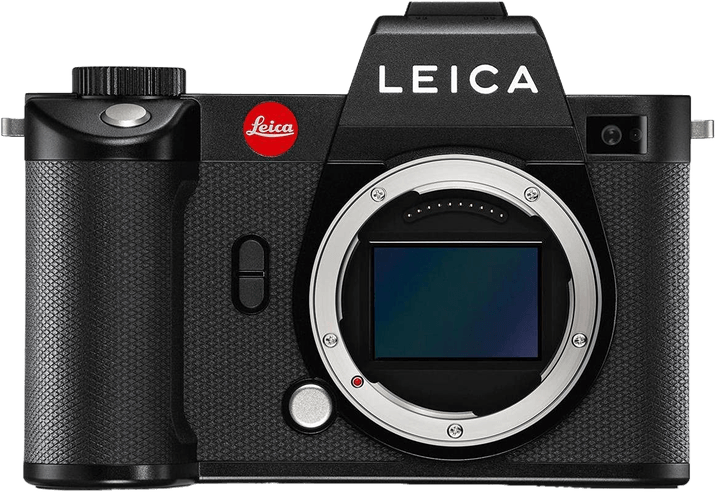
- Powerful 47 MP full frame sensor
- 187 MP multishot mode
- 4K uncropped video at 60 fps
- Built-in image stabilization
- Rugged and weather-sealed body

- Exceptional 24 MP BSI CMOS sensor
- Impressive 25 fps electronic shutter
- 4K video resolution at 60 fps
- Generous 4 GB internal buffer memory
- High ISO range up to 100,000

- Full frame BSI CMOS sensor with Triple Resolution
- Special IR + UV cut filter for effective correction
- Ergonomic controls and high-resolution touchscreen
- ISO range of 64 to 50,000
- Durable, lightweight, and scratch-resistant design

- Stunning 47.3 MP full frame sensor
- Fast Maestro II image processor
- Razor-sharp 28mm f/1.7 Summilux lens
- High-resolution 3.68 MP OLED viewfinder
- Wi-Fi connectivity for easy sharing
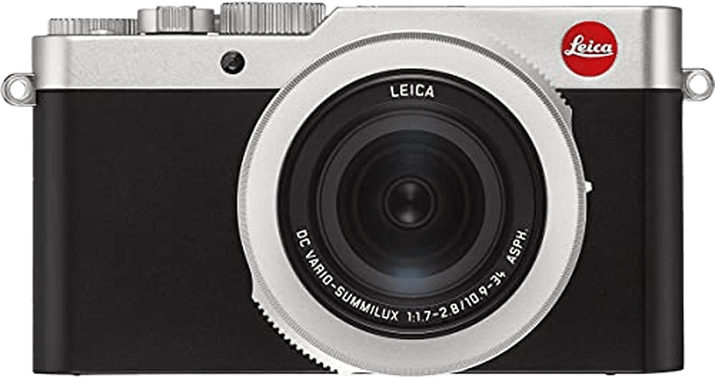
- High-quality 17 MP sensor
- Versatile 24-75mm f/1.7-2.8 lens with O.I.S.
- 1.24 million-dot touchscreen
- Metal housing is compact and sturdy
- Ultra HD 4K video and high-speed autofocus
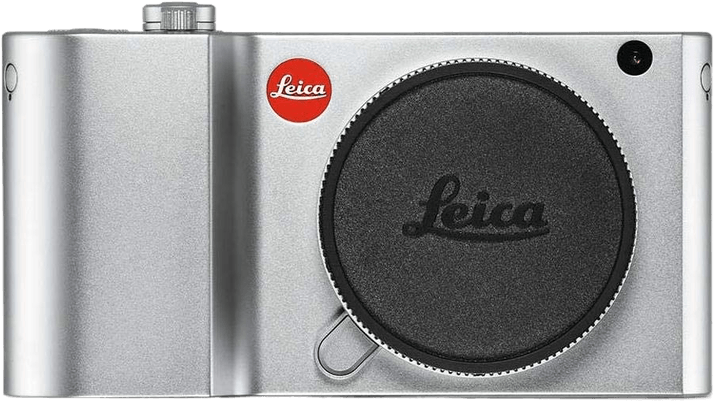
- Wide ISO range for low-light photography
- 4K video at 30 fps
- Faster frame rates in Full HD
- Sleek and stylish camera body
- Reliable autofocus with face detection
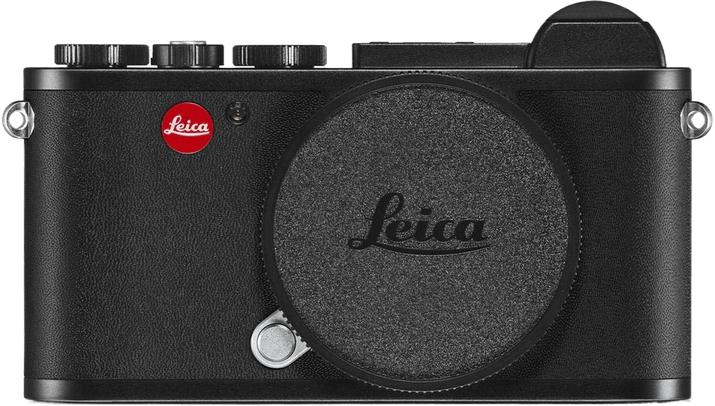
- 49-point focus system with face detection
- 4K with 30 fps frame rate
- Built-in electronic viewfinder
- Compact and stylish camera body
- 10 fps burst rate for action shots
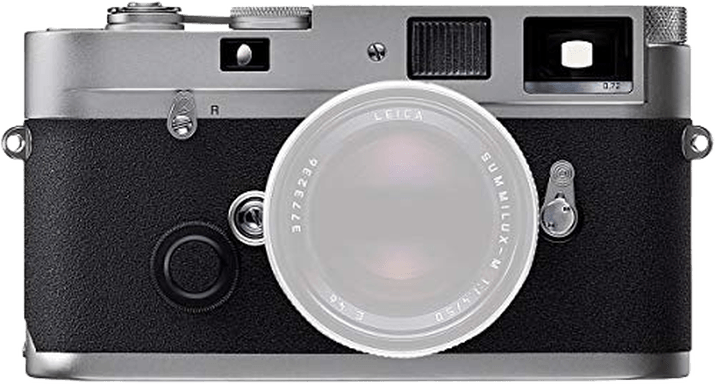
- Classic 35mm camera still available brand new
- All-metal internal components
- Smooth action and easy film loading
- Simple camera controls and layout
- Classic Leica Rangefinder design
Best Leica Cameras
Now we’ll take a closer look at all the best Leica cameras. We’ve included Leica’s top-of-the-line mirrorless cameras. There’s also the latest entry from their legendary M series. And there’s a 35mm camera for photographers who love film photography.
1. Leica SL2

| Released |
Released
2019
|
| Sensor Format |
Sensor Format
|
| Lens Mount |
Lens Mount
Leica L
|
| Megapixels |
Megapixels
47 MP |
| Autofocus Points |
Autofocus Points
225 |
| Maximum ISO (Native) |
Maximum ISO (Native)
50,000 |
| Frame Rate |
Frame Rate
20 fps |
| In-body Stabilization |
In-body Stabilization
|
| Max Video Resolution |
Max Video Resolution
|
| Other Key Features |
Other Key Features
Minimum ISO of 50, 4K at 60 fps, weather-sealed body, multishot mode
|
| Best For |
Best For
Professional photographers
|
The Leica SL2 is the most advanced Leica mirrorless camera to date. The build quality is fantastic. It has a powerful full frame sensor. And it has terrific video features for pro-level movie capture. It’s a premier mirrorless camera for professional photographers.
The full frame sensor gives you an incredible 47 MP resolution. And that still beats more recent mirrorless models from other brands. The details are sharp and the colors are vibrant. And the wide dynamic range gives you even better quality.
You can maximize image quality further by using the minimum 50 ISO setting. This helps you get the most out of the camera. And the other end expands to 50,000. That’s plenty to give you good options in low light.
For most people, a 47 MP resolution is more than enough. But you can produce ultra-high res images using the multishot mode. It combines several exposures to give you a single 187 MP resolution image. You need the latest 2.0 firmware updates. But the results are magnificent in every way.
The built-in image stabilization system helps you maintain image quality. It removes signs of camera shake for sharper images. And it gives you more control over your exposure settings.
The video features are the best of any Leica camera. You can record 4K video at 60 fps. That gives you vivid and smooth footage. You can shoot at 120 fps in Full HD. And you can shoot with 5K quality when you switch to APS-C mode. The footage is cropped, but the resolution is stunning.
The Leica SL2 has an intuitive menu interface. It has built-in Wi-Fi connectivity for easy media transfer. And all the tech is protected by a rugged and weather-sealed body. The price might take you by surprise. But the Leica quality is undeniable in this camera.
2. Leica SL2-S

| Released |
Released
2020
|
| Sensor Format |
Sensor Format
|
| Lens Mount |
Lens Mount
Leica L
|
| Megapixels |
Megapixels
24.6 MP |
| Autofocus Points |
Autofocus Points
225 |
| Maximum ISO (Native) |
Maximum ISO (Native)
100,000 |
| Frame Rate |
Frame Rate
20 fps |
| In-body Stabilization |
In-body Stabilization
|
| Max Video Resolution |
Max Video Resolution
|
| Other Key Features |
Other Key Features
4K at 60 fps, multishot mode, weather-sealed body
|
| Best For |
Best For
Enthusiast photographers looking for a high-quality mirrorless camera
|
The Leica SL2-S is a stripped-down and streamlined version of the SL2. It doesn’t have the same raw power as the original model. But it still has a full frame sensor. And you get excellent video features. It also has a more modest price tag.
The SL2-S still has a full frame BSI-CMOS sensor. But this model only has a 24 MP resolution. That seems like a big drop compared to the SL2. But you still get excellent image quality. The larger pixels improve the dynamic range. And the powerful processor pulls as much info from the pixels as possible.
Like the SL2, there’s a multishot mode for high-resolution images. It uses the same method of compositing several exposures together. And the results are 96 MP images. They’re not quite as mind-blowing as the SL2, but still breathtaking. It’s a fantastic high-resolution camera.
You also get a wide ISO range. The top maxes out at 50,000 ISO, giving you good low-light options. The larger pixels also reduce digital noise at higher ISOs. And there’s a 50 ISO setting for maximum quality.
There’s no change from the SL2 when it comes to video features. You can record 4K video at 60 fps. And there’s a 120 fps option if you switch down to Full HD. The ports for external devices help you record professional audio.
The autofocus system is great for photography and video. It uses 225 focus points with good frame coverage. And it has face-detection technology for fast and easy subject locking.
Photographers and videographers will appreciate the 5-axis image stabilization. There’s a 25 fps burst rate for capturing fast action. And get your time-lapse tripod set up because there’s a time-lapse video mode.
The Leica SL2-S lives in the shadow of the original SL2. But when you look at the SL2-S, it’s a fantastic full frame mirrorless camera. The image quality is fantastic. And you have the high-resolution option with multishot mode. And it’s a camera for videographers. It’s a well-rounded mirrorless that warrants the price tag.
3. Leica M11

| Released |
Released
2022
|
| Sensor Format |
Sensor Format
|
| Lens Mount |
Lens Mount
Leica M
|
| Megapixels |
Megapixels
60 MP |
| Autofocus Points |
Autofocus Points
1 |
| Maximum ISO (Native) |
Maximum ISO (Native)
50,000 |
| Frame Rate |
Frame Rate
4.5 fps |
| In-body Stabilization |
In-body Stabilization
|
| Other Key Features |
Other Key Features
Simple on-camera controls, classic retro design, minimum ISO level of 64, three image resolution settings, hybrid shutter system
|
| Best For |
Best For
Photographers who want advanced features and the classic Leica style
|
The Leica M11 is the latest mode in Leica’s iconic M-series. It retains the super-stylish rangefinder design. But all the specs have been turned up another notch. It’s another fantastic entry in this classic camera line.
You might not guess from the compact design, but the M11 has a full frame sensor. And it’s a powerful full frame sensor. At full power, it gives you a 60 MP resolution. That gives you stunning digital images. But if 60 MP is overkill, you can turn it down to 36 or 18 MP. That gives you excellent flexibility.
You get a wide ISO range. The top limit is 50,000. And a minimum level of 64 gives you gorgeous image quality. The images have a 14-bit color depth. And there’s a dynamic range of up to 15 stops.
The M11 has a new hybrid shutter system. It uses both a mechanical and an electronic shutter. And it can automatically switch between the two when needed. The benefits of the electronic shutter are that it’s silent and gives you faster aperture options.
The light metering system is also new. The older versions had the light meter on the shutter curtain. But on the M11, this has been moved to the image sensor. That means you get multi-field and spot metering in all photography modes.
The M11 is also lighter than the previous M10. Leica removed the traditional removable metal base plate. Now there’s only a slot for the battery. And that reduces the overall weight by 100 grams.
Now it’s time for the limitations. The M11 lacks some features digital photographers have come to take for granted. There’s no autofocus system. And I don’t mean there’s no face detection or tracking. I mean all focusing is done manually.
Moviemakers won’t be tempted by this camera. It’s a dedicated stills camera with no video features whatsoever. And even the burst rate is a slow 4.5 fps.
These might seem like big omissions by Leica. But it’s clear they wanted to give users an analog experience with a digital camera. Of course, the body design has that fantastic retro look. And now the functionality and user experience have a retro feel.
The Leica M11 is a niche camera. And perhaps the most niche model in the M series. It won’t be the best-selling digital camera in any category. But it gives a unique experience I’m sure many Leica fans will enjoy.
4. Leica Q2

| Released |
Released
2019
|
| Sensor Format |
Sensor Format
Full Frame
|
| Lens Mount |
Lens Mount
Fixed
|
| Megapixels |
Megapixels
47.3 MP
|
| Autofocus Points |
Autofocus Points
225
|
| Maximum ISO (Native) |
Maximum ISO (Native)
50000
|
| Frame Rate |
Frame Rate
10 fps
|
| Max Video Resolution |
Max Video Resolution
4K
|
| Other Key Features |
Other Key Features
Powerful full frame sensor, minimum ISO of 50, 4K video at 30 fps, f/1.7 max aperture
|
| Best For |
Best For
Pros looking for a powerful compact camera
|
The Leica Q2 might be the most powerful point-and-shoot camera on the market. It’s also the most expensive, but that’s the price of Leica quality. It doesn’t have the broadest appeal. But it is a joy to use.
It’s a fixed-lens camera with a full frame sensor. And it’s a powerful fixed frame sensor with a 47.3 MP resolution. That gives you incredible images with rich, well-saturated colors. And there’s a 50 ISO setting for even more magnificent images.
The top ISO limit is 50,000, so you can shoot in low light. And it has built-in image stabilization for even better exposure control. It gives you five stops of shutter speed compensation. That gives you sharper shots in low light. And you can shoot video by hand without a camera gimbal.
Despite being a compact camera, it’s one of Leica’s best 4K cameras. You can shoot with glorious 4K resolution at a smooth 30 fps. You also have a 24 fps rate in 4K. Or you can opt for 120 or 60 fps in Full HD mode.
The 10 fps burst rate isn’t the fastest. But considering that’s 10 fps at 47.3 MP, that is impressive. The autofocus system is also reliable and responsive. It has face-detection capabilities. And it can track movement across the frame.
The 28mm fixed lens has sensational optical quality. There’s very little distortion, so you get edge-to-edge clarity even in bright conditions. It also has a fast f/1.7 maximum aperture. It works well in low light. And it allows you to use a shallow depth of field.
The build quality is excellent. And it’s completely weather sealed for outdoor use. The problem is that it’s large and heavy for a compact camera. You’ll need a proper camera bag for this one.
The Leica Q2 is a luxury camera for photographers with deep pockets. But we can’t deny that it’s a sensational full frame compact camera. It won’t be for everyone. But there are a select few who will thoroughly enjoy this camera.
5. Leica D-Lux 7

| Released |
Released
2018
|
| Sensor Format |
Sensor Format
|
| Lens Mount |
Lens Mount
Fixed
|
| Megapixels |
Megapixels
17 MP |
| Autofocus Points |
Autofocus Points
49 |
| Maximum ISO (Native) |
Maximum ISO (Native)
25,600 |
| Frame Rate |
Frame Rate
11 fps |
| In-body Stabilization |
In-body Stabilization
|
| Max Video Resolution |
Max Video Resolution
|
| Other Key Features |
Other Key Features
Fixed zoom lens, fast f/2.7 max aperture, time-lapse mode, Wi-Fi connectivity
|
| Best For |
Best For
Casual photographers looking for a handy compact camera
|
The Leica D-Lux 7 is a handy camera with a compact body and a decent set of features. It’s a great option for travel and street photographers. It also produces lovely video footage for gonzo filmmakers. And the built quality is exactly as you’d expect from Leica.
The D-Lux 7 has a Micro Four Thirds sensor. That’s smaller than an APS-C or full frame sensor. That means you don’t get the same level of resolution. But the benefits are a lighter and more compact body. And that’s certainly the case with this camera.
The camera has a fixed 24-75mm lens. The optical quality is fantastic. You get very little distortion at any point in the zoom range. And you get a fast f/1.7 max aperture at the widest angle. That gives you excellent low-light performance. And it gives you a beautiful bokeh effect for portrait photography.
The 17 MP resolution isn’t spectacular. And the native ISO has a minimum of only 200. But this is expandable to 100 if you want better image quality. You also have built-in optical image stabilization that helps maintain quality in tough lighting conditions.
It’s a great option for filmmakers. It’s ideal for short videos or vlogging. You can shoot 4K footage at 30 fps. And you can shoot at 60 fps in Full HD.
Face-detection technology in the AF is always appreciated. And so is the built-in Wi-Fi connectivity. The 11 fps burst mode helps you capture fast action. And there’s a time-lapse mode for even more creative options.
The Leica D-Lux 7 is a great option for casual photography. The size and features make it a great option for travel photography. And the video features give it an even broader appeal.
6. Leica TL2

| Released |
Released
2017
|
| Sensor Format |
Sensor Format
APS-C
|
| Lens Mount |
Lens Mount
Leica L
|
| Megapixels |
Megapixels
24 MP
|
| Autofocus Points |
Autofocus Points
49
|
| Maximum ISO (Native) |
Maximum ISO (Native)
50000
|
| Frame Rate |
Frame Rate
7 fps
|
| Max Video Resolution |
Max Video Resolution
4K
|
| Other Key Features |
Other Key Features
30 fps frame rate at 4K, face-detection AF
|
| Best For |
Best For
Casual photographers
|
The Leica TL2 is a simple yet stylish mirrorless camera. It delivers incredible results for beginners and enthusiasts. And it’s a great option for professionals when they want to relax and take casual photos. It’s one of the older Leica models. But it still holds up against newer cameras in its class.
It has an APS-C CMOS sensor with a 24 MP resolution. That produces excellent images with sharp detail and vibrant colors. It’s still far ahead of smartphone cameras. And the 100-50,000 ISO range gives you good options for all lighting conditions.
The TL2 is a fun camera for amateur filmmakers. You can record sharp 4K footage with a frame rate of 30 fps. And you can record at 60 or 120 fps when you switch to Full HD. There’s no rotating screen, which is a problem for vloggers. But you can use the camera remotely via your smartphone.
The autofocus system uses 49 focus points. It isn’t the most advanced AF system. But it gives good frame coverage and it does have face detection. That helps with everything from portraits to street photography.
There’s no image stabilization system. But that isn’t a big issue for casual shooters. And the 7 fps is fast enough for most amateurs. The lack of environmental sealing is an issue, so you need to take care shooting outdoors.
The Leica TL2 doesn’t break many records. But it’s a smooth operator that delivers where it needs to. It’s a stylish camera that fits in any messenger bag. And it’s one of the more affordable Leica cameras.
7. Leica CL

| Released |
Released
2017
|
| Sensor Format |
Sensor Format
|
| Lens Mount |
Lens Mount
Leica L
|
| Megapixels |
Megapixels
24 MP |
| Autofocus Points |
Autofocus Points
49 |
| Maximum ISO (Native) |
Maximum ISO (Native)
50,000 |
| Frame Rate |
Frame Rate
10 fps |
| In-body Stabilization |
In-body Stabilization
|
| Max Video Resolution |
Max Video Resolution
|
| Other Key Features |
Other Key Features
Built-in viewfinder, 30 fps frame rate in 4K, 10 fps burst mode, face-detection autofocus
|
| Best For |
Best For
Beginners or enthusiasts looking for a stylish and effective APS-C camera
|
The Leica CL is a classy APS-C mirrorless camera. It’s a few years old now. And newer cameras have surpassed it in many respects. But due to the build and image quality, it remains one of Leica’s most popular cameras.
It’s a compact and lightweight camera, so you won’t have a problem fitting it in your camera backpack. It also has a retro look that echos Leica’s vintage film cameras. That’s why street photographers love the CL.
It’s armed with an APS-C CMOS sensor. And the 24 MP resolution gives you gorgeous images. The color rendition is fantastic. And you get good low-light performance with a 50,000 ISO limit.
You can also shoot 4K videos. You have a 30 fps max frame rate at full resolution. But you can drop down to Full HD for a faster 60 fps frame rate. That’s a great option if you’re recording sports or fast-moving subjects. You also have a 10 fps burst mode for action photography.
The AF system isn’t the most advanced. And we found it struggled in low-light situations. But the 49 focus points give you good frame coverage. And the face-detection abilities make focusing on human subjects quick and easy.
Unlike the TL2, the CL has a lovely electronic viewfinder built in. You don’t have to rely on the 3-inch LCD screen for composition. This is a definite plus in our book.
The CL does lack some features you might expect at this level. There’s no environmental sealing, so you have to be careful outside. And there’s no image stabilization. That’s something we’re seeing even in entry-level mirrorless cameras now.
If you like Leica cameras, you will love the Leica CL. It’s lightweight, compact, and it looks fantastic. The camera also delivers photos and videos to a high standard. It doesn’t have all the bells and whistles of a modern mirrorless. But it gives you an authentic Leica experience that some shooters adore.
8. Leica MP

| Released |
Released
2003
|
| Camera Type |
Camera Type
35mm Analog
|
| Lens Mount |
Lens Mount
Leica M
|
| Other Key Features |
Other Key Features
All-metal components, rangefinder focus system, aperture control ring on lens
|
| Best For |
Best For
Film photographers
|
Leica built its reputation as a high-end camera brand throughout the 20th century. Their 35mm film cameras are legendary. And unlike other brands that made the crossover from film to digital, Leica still produces analog cameras. The Leica MP was first released in 2003. But you can still buy it brand new.
The MP has the classic Leica rangefinder design. You have the optical viewfinder on the top-left corner of the camera. The only other controls on the body are the shutter speed dial and the film winding lever. And as with most film cameras, you adjust the aperture using the ring on the lens. It’s simple, sleek, and timeless.
It’s a little on the heavy side. But that’s because Leica doesn’t cut any corners with build quality. It’s an all-metal body with a high level of scratch resistance. And you can buy it in a black or chrome finish.
All the internal components are metal too. While that does add to the overall weight, it means they are durable. And even if it does break, Leica will repair it. They have a program where you can send them your broken film cameras, and they’ll repair and clean them. That’s one of the reasons Leica shooters are so loyal.
Shooting with a Leica film camera is a unique experience. Other film cameras can be clunky and hefty. But the MP is smooth and effortless. And problems with winding film or pieces becoming jammed are incredibly rare. That’s why it’s still worth investing in a Leica MP if you’re a film photographer.
FAQs on the Best Leica Cameras
When it comes to Leica cameras, there’s a lot of information to absorb. But we’ve answered some of the most-asked questions to help you narrow down your search.
Which Leica Camera Is Best for Professional Photographers?
Leica cameras have always been popular with professional photographers. That’s thanks to their high build quality and advanced features.
The Leica SL2 is the best Leica camera for professionals right now. It’s a powerful full frame mirrorless camera. It has a huge standard resolution of 47 MP. And you can even get 187 MP images with multishot mode. Pros can also use it for shooting cinematic videos with a 4K resolution.
Which Leica Camera Is Best for Street Photography?
The Leica M series produced some of the most popular street photography cameras of all time. And the Leica M11 is sure to continue that trend. The stylish body not only looks fantastic, it’s compact and portable too. It fits nicely in a messenger or sling bag. And you can keep a low profile when shooting.
The Leica CL is another fine camera for street photographers. It’s compact, stylish, and perfectly suited to the demands of street photography. And it’s a bit more budget-friendly than the M11.
The Leica MP is perfect for street photographers using film. It has the classic rangefinder design that street photographers love. And it’s portable and simple to use. There are no distractions, so you can focus on capturing incredible street shots.
Why Is the Leica M6 Still So Popular?
Released in 1984, the Leica M6 remains one of the most popular 35mm cameras. It’s the ultimate Leica rangefinder. And many believe it’s the finest camera Leica ever produced. That’s why it was in production for 20 years.
Not many people would argue with the fact it looks fantastic. The components are well constructed. And all the moving parts have a smooth action that gives you an effortless experience.
Leica no longer produces the M6. But there was a limited reissue in October 2022. Models are hard to find, especially outside of central Europe. And it isn’t cheap for a film camera.
You can buy other M-series 35mm cameras, like the MP, brand new from Leica. Leica also repairs and cleans all of its cameras. That’s great if you already have a Leica film camera. But the downside is that it means even old Leicas still have a heavy price tag.
Why Are Leica Cameras So Expensive?
Leica is a luxury camera brand that makes a small selection of well-crafted cameras. Their cameras are renowned for their quality. And the brand is respected for its reliability and dedication. Their philosophy of making cameras has never changed. And that has created widespread loyalty among their users.
Leica cameras are made in Germany. They have excellent labor practices. And they never cut corners when it comes to materials or processes. Every Leica camera is made with care and appreciation. And you can feel it when you use one.
Not everyone can afford a Leica camera. But those lucky enough to use them often use nothing but Leica. The Leica community is dedicated and loyal to the brand. And for those people, a Leica camera is worth every penny.
Conclusion: The Best Leica Camera
Leica doesn’t have the biggest output when it comes to new models. But Leica has a small but classy range of cameras to choose from. We’ve seen pro-grade mirrorless cameras. The M11 continues the line of iconic rangefinders. And there are APS-C cameras for casual shooters.
The Leica SL2 is the best Leica camera right now. It’s a powerful full frame mirrorless with high-resolution image processing. It’s a great camera for videographers. And it’s packed with other advanced features for multimedia production.

